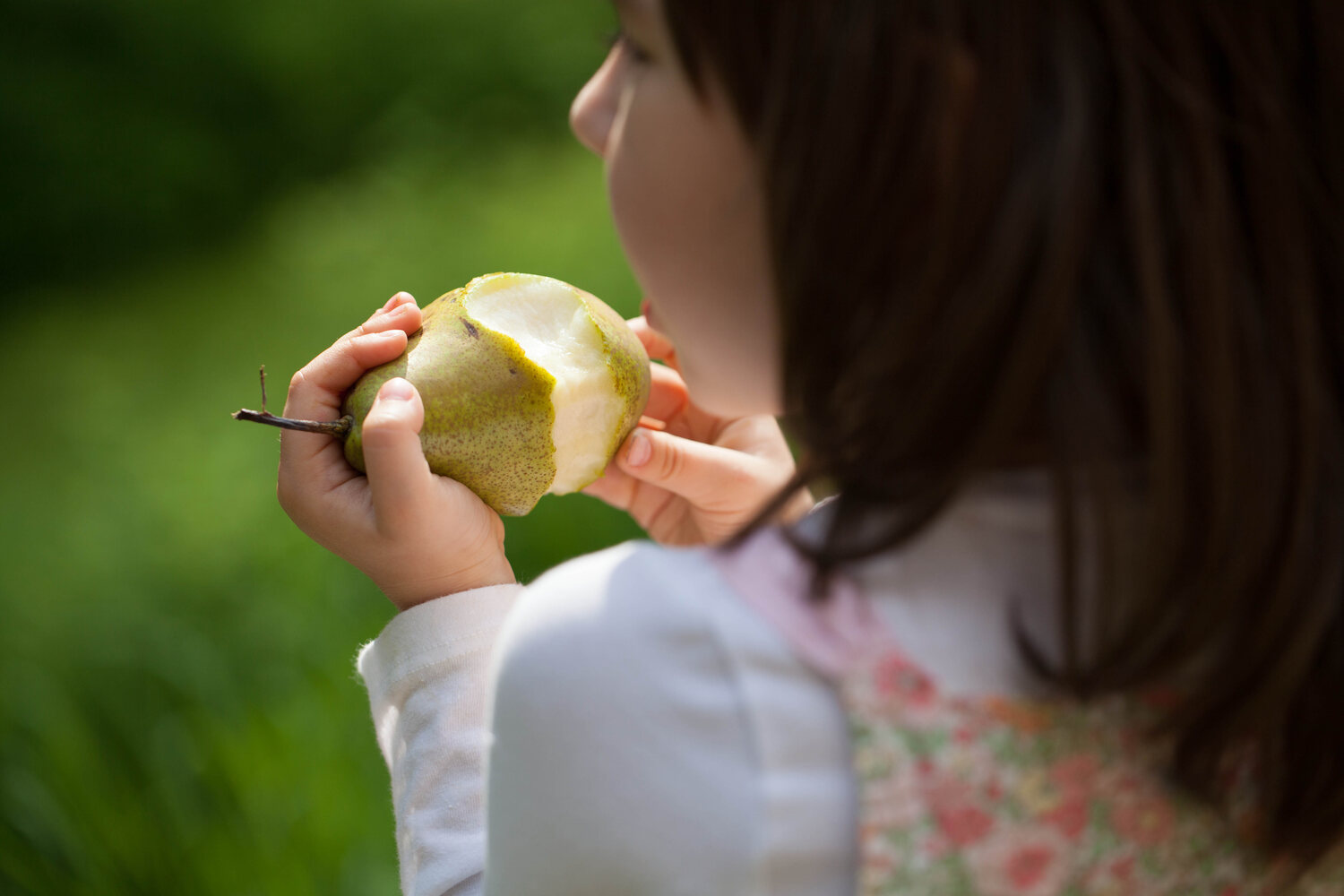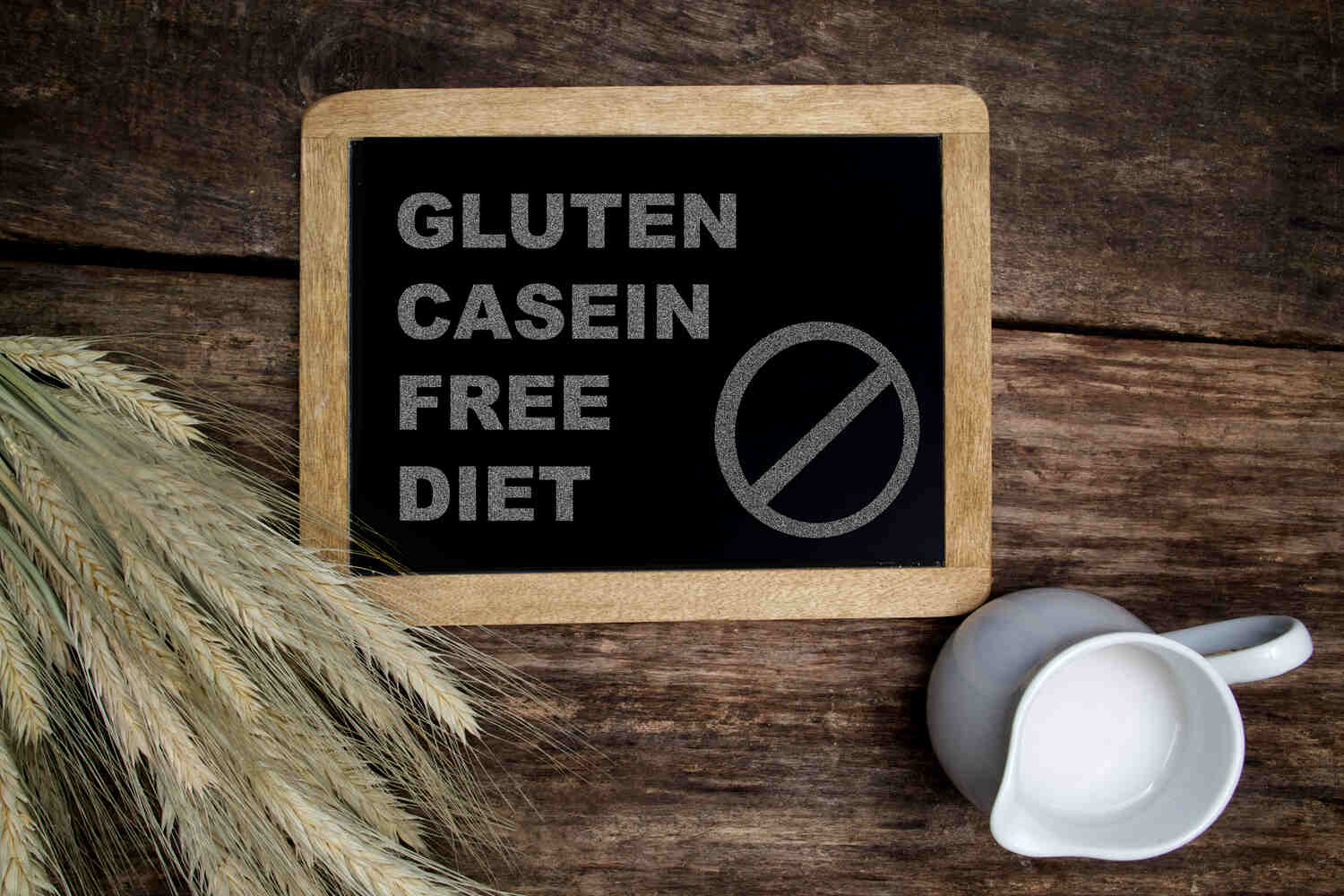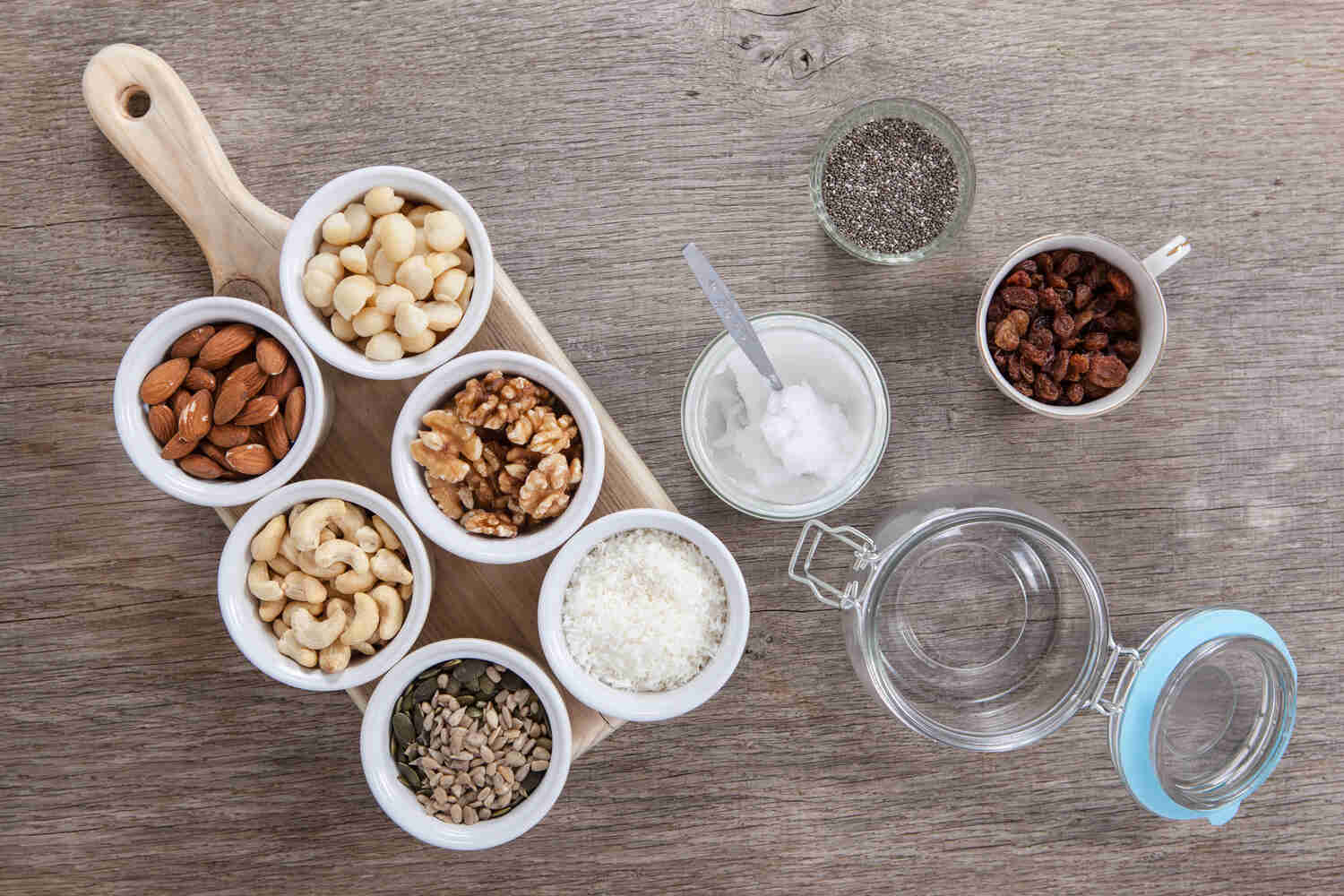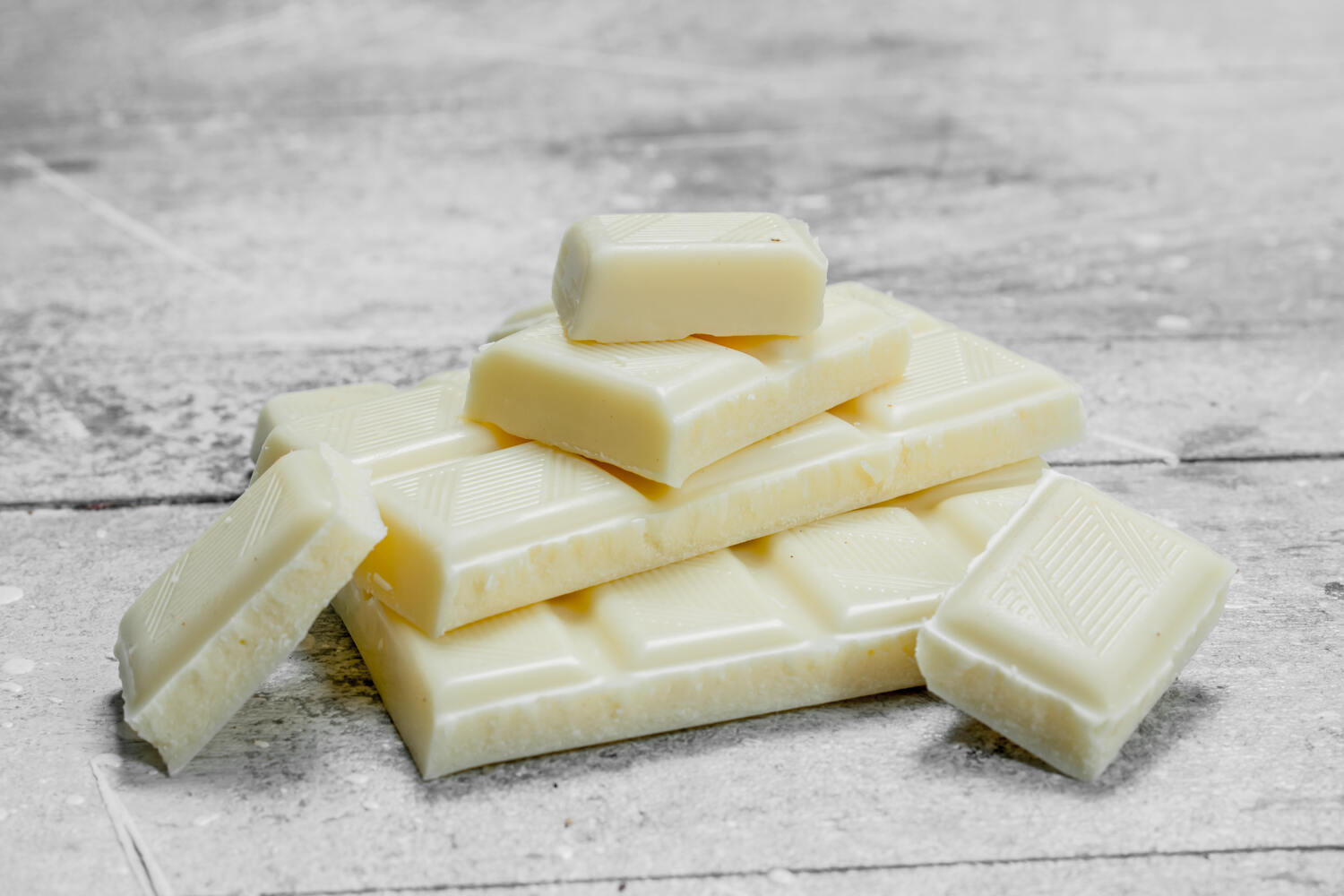
Food sensitivity, food rejection, and inadequate food intake are frequently seen in children with autism. This makes it a hindrance for them to develop physically and socially as they start developing nutritional problems. The Gluten-free Casein-free Diet, also known as GFCF is one such therapy used by healthcare teams that involves the elimination of proteins (casein and gluten) from the diet. The GFCF diet for managing autism has beneficial effects on the brain and social development.
While many parents wonder how the GFCF diet works, others may swear by its effectiveness. Together with health practitioners, they have and still report positive outcomes, thereby contributing to a healthy gut and brain in autistic kids. It is essential that autistic kids receive optimum fiber, vitamins, and minerals. Let’s delve deep into the gluten-free casein-free diet and understand why this diet therapy is important for children with autism.
In This Article
- What is The Gluten-free Casein-free (GFCF) Diet For Autism?
- How Does GFCF Diet Work For Autism?
- Which Foods Contain Gluten?
- Which Foods Contain Casein?
- Tips For Including Gluten-free Diet in Your Child’s Diet
- How to Start The GFCF Diet For Your Child?
- What to Feed Your Child Instead?
- How Will The GFCF Diet For Autism Help Your Kid?
- Who Shouldn’t Follow The GFCF Diet?
- How to Eat Out With a GFCF Diet?
- FAQ’s
What is The Gluten-free Casein-free (GFCF) Diet for Autism?

Gluten-free Casein-free diet is the most frequent alternative diet therapy administered for autistic children. This diet avoids gluten (found in rye, barley, and wheat) and casein (dairy) in order to improve gut health and brain. Most parents of children with autism stated positive changes in behavior, sleep and speech (1).
The underlying concept of the GFCF diet in autism is eliminating gluten and casein which are known to cause leaky gut in them. When the proteins, gluten, and casein, are compromised, small fragments of these enter the bloodstream and affect the brain. This contributes to typical symptoms of autism.
Some parents even hold the belief that their children have certain allergies or intolerances to the food ingredients (2). As a result, they opt for tests to confirm their assumptions. Many parents still opt for GFCF dietary choices as they claim to bring positive behavior and better speech even without allergies.
How Does GFCF Diet Work For Autism?

GFCF diet helps alleviate a variety of symptoms, right from social regulation to emotional development in autistic children. It is a kind of diet therapy that eliminates casein and gluten. These proteins are difficult to digest and result in gut damage in autistic children. With damage, fragments of these proteins enter the bloodstream and impact the brain in an adverse manner.
In short, these proteins affect the gut-brain axis negatively leading to typical symptoms of autism (3). Not only this, these proteins affect the metabolism of essential nutrients such as vitamin B12, folate (4), calcium, iron (5), and zinc, making kids nutritionally deficient.
The rationale behind this diet therapy is the idea that autistic children have either an allergy or heightened sensitivity to gluten and casein containing foods. Children with autism tend to metabolize peptides and proteins present in gluten and casein food sources in a different manner. As a result, the brain interprets them as artificial opiate-like compounds which then damages the GI tract.
Symptoms of typical autism arise and turn worst and if not managed immediately. The goal behind this diet is to reduce symptoms, enhance social interactions, improve speech and cognition.
Which Foods Contain Gluten?

Gluten is a protein found in grains such as wheat and its varieties, rye, barley, and oats. >Foods that contain gluten are chapatis, seviyan/vermicelli, semolina, bulgur wheat, brewer’s yeast, wheat starch, couscous and products such as bread, breadcrumbs, cakes, muffins, pastas, malted beverages, donuts, naan, pita breads, cornbread, rolls (sweet and savory) (6).
There are certain foods served in restaurants or available in markets where gluten is served in a hidden manner. These include-
- Energy bars and granola bars: It may contain wheat or oats that are not gluten-free
- French fries: This can be risky due to batter made of wheat flour or cross-contact from fryers
- Seasonings present in potato wafers or chips containing malt vinegar or wheat starch
- Processed meat
- Candies
- Soup, especially cream-based ones, as they may have flour as a thickener
- Multi-grain tortilla chips or tortillas that could contain a wheat-based ingredient
- Salad dressings and marinades may contain malt vinegar, soy sauce, or flour
- Soy sauce
- Cheesecake
- Eggs served at restaurants/cafes might have pancake batter in scrambled eggs and omelets though eggs themselves are naturally gluten-free
Which Foods Contain Casein?

Casein is abundant in milk, curd, yogurt, cream (half and full), cheese, and butter. Non-dairy foods such as protein powders, soup bases, puddings, and custards, milk chocolate and white chocolate also contain casein. Many soy products and fortified products claiming to be lactose-free or dairy-free also contain casein.
Many times children with autism exhibit sensitivities to soy and corn apart from casein and gluten. Due to similar protein resemblances, it is advisable to eliminate these ingredients for at least 3 weeks and then give a trial. If it still persists, then better stop including further.
Tips For Including Gluten-free Diet in Your Child’s Diet

Excluding the easy-to-go snacks and favorite foods from the child’s diet is a tough challenge for parents when initiating a GFCF diet. While some autistic children have food aversions, sensory and behavioral issues, some instantly accept the GFCF diet.
1. Explore The Outer Aisles of Local Grocery Stores
Start with fresh vegetables, lean meat, eggs, fruits, dals, and rice. These are not just gluten-free and casein-free but also provide essential nutrients like amino acids, B-complex vitamins and fiber. Look for seasonally available ones.
2. Experiment With Other Essentialities
There are grains declared gluten-free such as amaranth and quinoa. Being high in protein and fiber, it also provides phytochemicals and micronutrients like zinc, phosphorus, magnesium, iron, and folate.
3. Check The Food Labels
Commercially prepared foods contain preservatives with gluten to increase the shelf life. Seasonings, condiments like soy sauce, flavorings and premixes of soups, and pancakes have a potential amount of gluten. Hence, it is essential to know about the added ingredients before symptoms aggravate. As per Indian Food Standards, foods containing less than 20 mg/kg of gluten can be considered as gluten-free in packaged food.
How to Start The GFCF Diet For Your Child?
To implement the GFCF diet successfully, the first thing is to enlist all those foods consumed by autistic children and identify whether they contain gluten or casein. Once done, make sure it is eliminated gradually and then completely. The child shows progress once all these foods are completely eradicated rather than mere reduction. Positive changes in children with autism are seen typically after 2-3 weeks. Family members should maintain a journal to observe the changing behavior pattern post meal consumption.
What to Feed Your Child Instead?
Though certain foods are restricted in autism, there are more options available which can be incorporated daily. Some of them are-
| Food Products | Avoid | Include |
| Milk and Milk Products |
|
|
| Grains and Pulses |
|
|
Nowadays pasta and pancake mixes made from rice flour and chickpea flour are available. Also include vegetables and fruits to improve fiber intake (7). Even fish and eggs can be consumed. Read the labels on food packets carefully before including them in your child’s diet.
How Will The GFCF Diet For Autism Help Your Kid?
The GFCF diet has numerous benefits for autistic children. Many parents even reported improvement in their children after following the GFCF diet (8). It is considered safe and effective diet therapy which greatly improves learning skills, social behaviors, cognitive functions, and communication skills. This effectiveness is possible with reduced ASD symptoms through diet via opioid theory.
Who Shouldn’t Follow The GFCF Diet?
Generally, the diet is considered safe but if this elimination diet goes on like this, the child might be prone to nutritional deficiencies. It would be better to sit with experts like dietitian and pediatrician, to understand and make the diet carefully with other options. It is important to ensure intake of high-fiber grains and vegetables to fulfill the requirements adequately (9).
How to Eat Out With a GFCF Diet?

This is quite challenging as many times information is not properly disclosed but this can be sorted by keeping certain points in mind like-
1. Check The Dish Name And Information Properly
Parents feel bad when they find little or no options available. But today thanks to technology specially Google, they can check for restaurants that serve gluten-free and casein-free menus or even look for gluten-free and casein-free options in the menu. If the menu is not available in the websites, look for contact details and clear the queries by calling the restaurant.
2. Be Specific When Ordering
When ordering a meal in the restaurant or any food outlets, parents must cross check with the method of preparation (like not cooking in butter or removing dairy), ingredients and customize it as required. For instance, if ordering pizza for a child, know what crust is made of and what type of cheese or veggies and seasonings will be added.
GFCF diet is an elimination diet therapy for autistic children which has been in use for many years by health experts. It helps to improve behavioral and cognitive problems by eliminating gluten and casein. Care should be taken while planning this to closely monitor the behavior and inclusion of supplements or altered food choices when required.
FAQ’s
1. Does Eliminating Gluten Help Autism?
Gluten-free diets are mostly combined with casein-free diet to manage children with autism. Eliminating gluten from the diet improves physiological symptoms and autism behavior in kids.
2. Which Flour is Best For Autism?
There are different types of flour available to meet the requirements of gluten-free food such as almond flour, tapioca flour, rice flour (white rice and brown rice), millet flour.
3. What is The Best Diet Plan For an Autistic Child?
A well-balanced GFCF diet with emphasis on lean proteins, dietary fiber and healthy fats is an incredible diet plan for an autistic child. This diet, if planned under supervision of health practitioners and dietitians, will support gut health and brain development.
4. Can Gluten Affect Autism?
Children with autism metabolize peptides and proteins found in gluten. Their brain interprets these substances as synthetic opiate-like compounds. The compounds then travel all over the body damaging the gut, causing symptoms such as bloating, diarrhea or even develop sensitivity toward gluten.
5. What Foods Are Good For The Autistic Brain?
There are many food sources that offer a variety of nutrients. Foods such as walnuts, fish provide omega-3 fatty acids which reduces inflammation and supports brain development. Spinach, banana, cashews, and almonds are good sources of magnesium and vitamin B6 that helps in speech development. Fruits and other vegetables provide fiber and vitamin C.
6. Which Fruit is Good For Autism?
Children with autism can have citrus fruits such as oranges, lime and fruits like apple, papaya, and berries. These fruits are rich in antioxidants that reduces inflammation and improves overall being.
7. Which Milk is Best For Autism?
Children with autism can have plant-based milk namely almond milk, coconut milk, and rice milk. They are lactose-free, casein-free and fortified with calcium and Vitamin D so that the child is not deprived of these nutrients.
References
- Effectiveness of the gluten-free, casein-free diet for children diagnosed with autism spectrum disorder: based on parental report – [https://pubmed.ncbi.nlm.nih.gov/22564339/]
- Sensory sensitivity and food selectivity in children with autism spectrum disorder (ASD): outlines for food therapy – [https://www.researchgate.net/publication/373201186_Sensory_sensitivity_and_food_selectivity_in_children_with_autism_spectrum_disorder_ASD_outlines_for_food_therapy]
- A review of gluten- and casein-free diets for treatment of autism: 2005–2015 – [https://www.tandfonline.com/doi/full/10.2147/NDS.S74718]
- Cerebral folate receptor autoantibodies in autism spectrum disorder – [https://pubmed.ncbi.nlm.nih.gov/22230883/]
- Iron Deficiency in Autism and Asperger Syndrome – [https://journals.sagepub.com/doi/abs/10.1177/1362361302006001008]
- Effects of Gluten on Health: Pseudocereals as Gluten Substitutes – [https://www.igi-global.com/chapter/effects-of-gluten-on-health/337281]
- Dietary intake and gastrointestinal symptoms are altered in children with Autism Spectrum Disorder: the relative contribution of autism-linked traits – [https://pubmed.ncbi.nlm.nih.gov/38419087/]
- The Gluten-Free, Casein-Free Diet and Autism – [https://www.researchgate.net/publication/275804146_The_Gluten-Free_Casein-Free_Diet_and_Autism]
- Gluten- and casein-free dietary intervention for autism spectrum conditions – [https://www.frontiersin.org/articles/10.3389/fnhum.2012.00344/]
